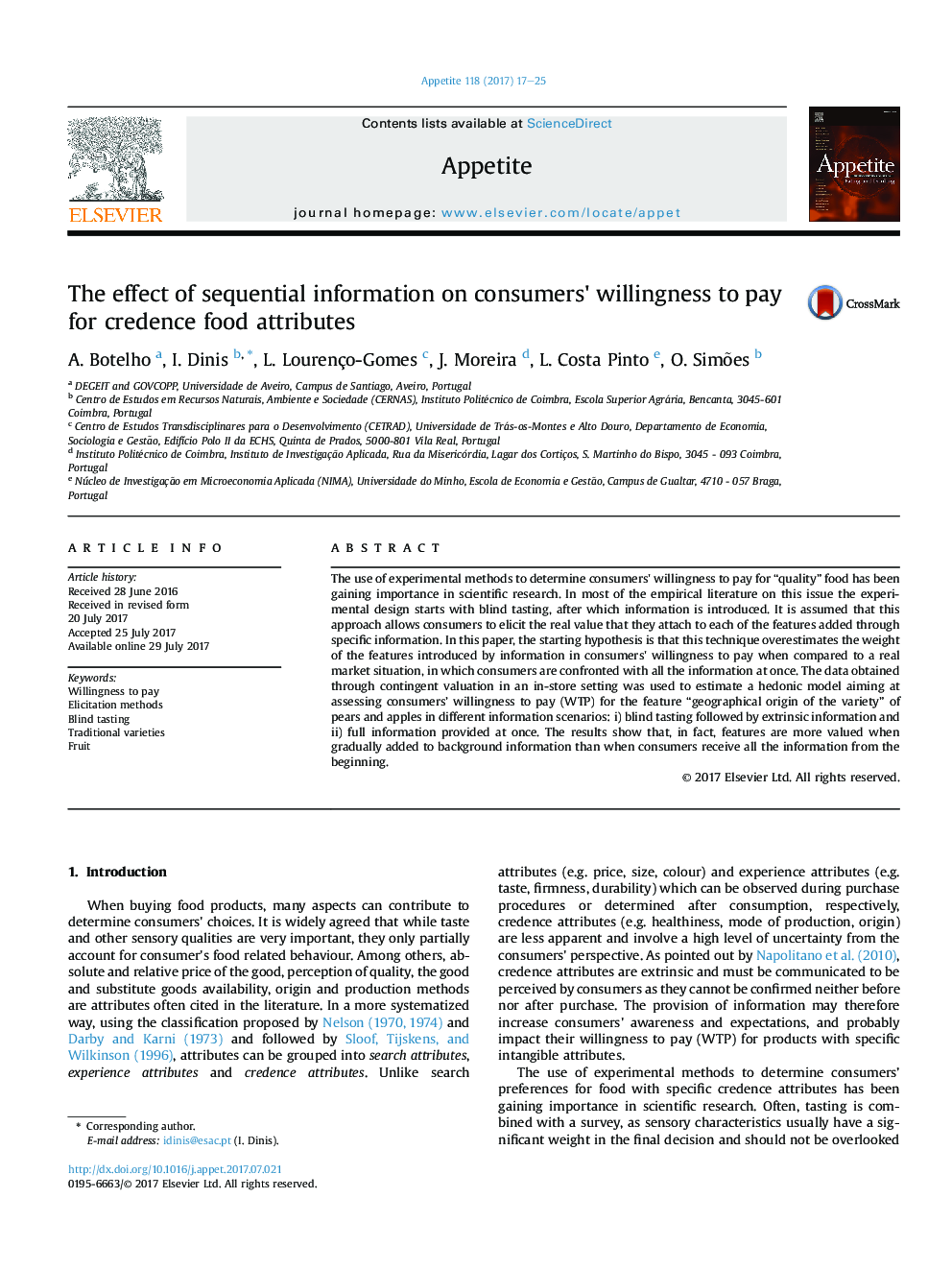| Article ID | Journal | Published Year | Pages | File Type |
|---|---|---|---|---|
| 5044218 | Appetite | 2017 | 9 Pages |
The use of experimental methods to determine consumers' willingness to pay for “quality” food has been gaining importance in scientific research. In most of the empirical literature on this issue the experimental design starts with blind tasting, after which information is introduced. It is assumed that this approach allows consumers to elicit the real value that they attach to each of the features added through specific information. In this paper, the starting hypothesis is that this technique overestimates the weight of the features introduced by information in consumers' willingness to pay when compared to a real market situation, in which consumers are confronted with all the information at once. The data obtained through contingent valuation in an in-store setting was used to estimate a hedonic model aiming at assessing consumers' willingness to pay (WTP) for the feature “geographical origin of the variety” of pears and apples in different information scenarios: i) blind tasting followed by extrinsic information and ii) full information provided at once. The results show that, in fact, features are more valued when gradually added to background information than when consumers receive all the information from the beginning.
